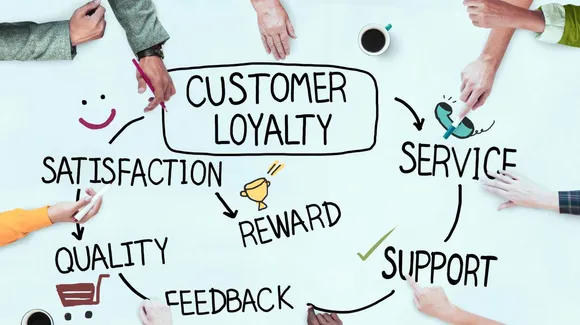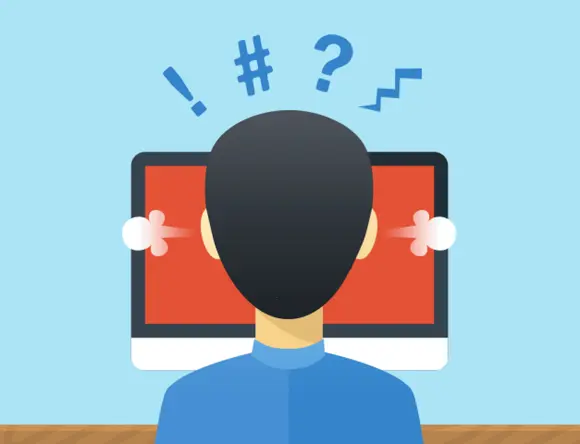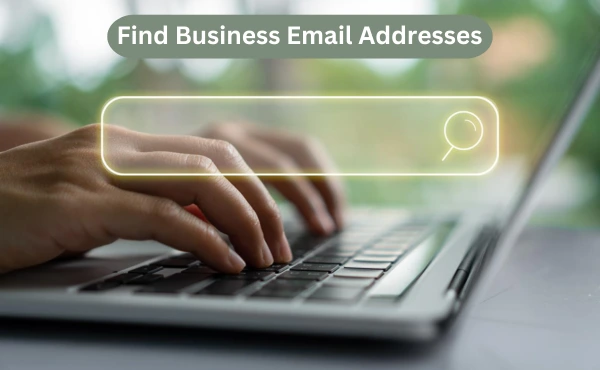Yes, Boost Inbox is designed to cater to businesses of all sizes and industries.

Sales extend beyond merely closing deals; they encompass nurturing relationships, creating impact, and addressing customers' challenges. But how can you identify your customer's pain points?
In this blog, you'll discover how to detect and effectively tackle these issues, transforming every deal into a personalized assistance scenario. Let's get started!
What Are Customer Pain Points?

Customer pain points are specific challenges or frustrations clients face when interacting with a business or using a product or service. These issues can range from navigating a complex interface to lacking features that cater to specific needs. Pain points can vary depending on the industry, target audience, and context.
Addressing these pain points not only meets customer needs but also mitigates dissatisfaction, boosting your chances of closing deals and improving customer retention in the long run.
Why You Should Address Customer Pain Points?

1. Customer Satisfaction and Loyalty
Addressing customer pain points can significantly enhance their experience. By understanding and resolving their concerns, you can increase the likelihood of turning a one-time consumer into a loyal client.
Key Insights
- About 83% of people trust businesses more when their issues are addressed and solved.
- Even with cheaper options available, 56% of buyers are willing to spend more on a brand they favor.
2. Competitive Advantage
Meeting customer needs and addressing their pain points can give your business a competitive edge. Offering solutions that competitors may overlook can differentiate your brand and attract more potential customers.
Key Insights
- 65% of customers expect companies to adapt to their changing needs and preferences.
3. Retention and Repeat Sales
Satisfied clients are more likely to return, while unhappy customers tend to look elsewhere. Keeping in touch with your clientele and promptly resolving issues is in your best interest.
Key Insights
- Email remains the most popular contact channel for support teams, essential for keeping prospects engaged and improving retention rates through timely follow-ups and personalized email sequences.
4. Word of Mouth and Referrals
Happy customers are your best promoters. Effectively addressing their pain points can spark positive recommendations, attracting new potential customers to your business.
Key Insights
- 94% of customers who rate a company’s service as “very good” are more likely to recommend that company to others.
5. Product Enhancement
Identifying and addressing customer pain points within your product or service provides valuable feedback for improvement.
Key Insights
- Implementing customer insights into your services or product can lead to a 53% improvement in customer satisfaction, ensuring their needs are acknowledged and addressed.
6. Brand Reputation
Resolving customer pain points helps improve your company image among your target audience. Businesses with high reviews are more likely to expand their client base.
Key Insights
- 95% of customers read online reviews before making a purchase.
7. Cost Efficiency
Retaining customers is more cost-effective than acquiring new ones. Addressing common pain points through streamlined processes, tech integration, and constant quality enhancements can keep current customers engaged and save costs.
Key Insights
- More than two-thirds (70%) of managers agree that retaining customers is cheaper than acquiring new ones.
Types of Pain Points
The types of pain points can help you organize and better understand the end-to-end customer experience.
Here are some common categories:
1. Productivity & Convenience Pain Points
These are the hurdles customers face in their day-to-day operations, impeding efficiency, effectiveness, or overall productivity.
Examples
- Time-consuming processes
- Complex technology
- Insufficient analytics and reporting tools
- Lack of integrations
2. Financial Pain Points
These pain points arise when customers feel they are spending too much on a product or service.
Examples
- Pricing concerns
- Budget constraints
- Uncertainty about ROI
- Affordability of upgrades or add-ons
3. Customer Journey Pain Points
These pain points occur at various stages of the buying process, from initial research to post-purchase service.
Examples
- Lack of information
- Complex buying process
- Payment troubles
- Lack of personalization
4. Product or Service Quality Pain Points
Problems with product or service quality can hinder business growth.
Examples
- Performance concerns
- Scalability limitations
- Functionality deficiencies
- Usability challenges
5. Customer Service Pain Points
These pain points stem from poor support services.
Examples
- Ineffective communication
- No personalization
- Difficulty accessing support channels
- Inadequate problem resolution
How to Recognize Customer Pain Points?

1. Create a Buyer Persona
By delving into demographic information, goals, and needs, you can gain insights into your target audience and predict potential issues.
2. Listen Actively
Give full attention to your prospects, focusing on verbal and non-verbal cues to understand their needs and concerns.
3. Ask Open-Ended Questions
Encourage clients to share detailed information and insights, providing valuable context for understanding their preferences.
4. Initiate and Analyze Feedback
Reviews obtained through surveys or direct communication can reveal the level of satisfaction with a product or service. Regularly analyze this information.
5. Study Competitors
Evaluate the products, services, and strategies of other businesses in your industry to identify customers' needs and requests.
6. Utilize Data Analytics
Leverage data from various sources to optimize your sales and marketing strategies.
7. Collaborate Across Departments
Work closely with colleagues from different teams to tackle each issue and ensure clients feel supported.
How to Tackle Customer Pain Points?
1. Identify Pain Points
Listen to customers concerns and ask probing questions to delve deeper into the root causes of their issues.
Example
- A sales rep at a B2B product company identifies pain points like manual data entry and insufficient tracking of customer interactions by discussing sales workflows with a client.
2. Prioritize the Issues
Focus on the most pressing issues by analyzing their impact on the customer's business or personal objectives.
Example
- A sales team lead at an IT support company prioritizes data security issues over software glitches and cloud migration problems.
3. Customize Solutions
Tailor your solutions to address the problem directly, avoiding a one-size-fits-all approach.
Example
- Suggest a sales automation tool with lead scoring and activity tracking features for a prospect struggling with lead management and team productivity.
4. Communicate Value Proposition
Clearly articulate how your product or service resolves the customer's pain points, highlighting tangible benefits and outcomes.
Example
- Explain how your software will help a lead generation agency save time and resources by prioritizing leads and tracking interactions.
5. Provide Social Proof
Share case studies, testimonials, or success stories from customers who have overcome similar pain points.
Example
A marketing manager at a SAAS company shares success stories on the corporate website, illustrating how clients have reached or exceeded their goals.
6. Offer Demonstrations or Trials
Allow prospects to try out your product or service firsthand through demos or trials.
Example
Conduct a live demo of your sales automation platform, showcasing its intuitive interface, automated workflows, and CRM system integration.
7. Listen and Adapt
Continue to listen actively to feedback and concerns throughout the customer journey, adjusting your approach as needed.
Example
Address a long-term client's concerns about support quality by offering solutions with clear deadlines, leading to continued satisfaction and positive reviews.
8. Follow Up
After closing a deal, continue to engage with the customer to ensure satisfaction and foster long-term relationships.
Example
Stay in touch with a top prospect after closing a deal and resolve any issues promptly, ensuring continued use of your services.
9. Provide Ongoing Support
Offer ongoing assistance to ensure customers continue to derive value from your solution.
Example
Assign a dedicated support representative to assist a new client with initial setup, user configuration, and training on using your cybersecurity software suite effectively.
Key Takeaways
Understanding your customers concerns and challenges is about more than just sales; it's about offering support and guidance to build trust and loyalty. When you genuinely strive to ease their worries, it fosters a positive long-term relationship. Now that you know these common pain points, take a closer look at your clientele. Your product or service has the potential to enhance their lives. Go on you've got this! Your efforts will be appreciated.
Conclusion
Understanding and addressing customer pain points is essential for any successful sales strategy. By identifying these challenges and offering tailored solutions, you can significantly enhance customer satisfaction, build lasting relationships, and gain a competitive edge. Remember, the goal is not just to close deals but to create meaningful connections and provide ongoing support. This approach not only drives retention and repeat sales but also cultivates a strong brand reputation and encourages positive word-of-mouth referrals. By continuously listening to your customers, adapting to their needs, and providing exceptional service, you can transform their pain points into opportunities for growth and success. Your dedication to resolving their issues will undoubtedly be appreciated, leading to a loyal customer base and sustainable business growth.
What to read next
Absolutely! Boost Inbox is compatible with most major email service providers.
The warmup process duration may vary depending on your email volume, but it typically ranges from a few days to a couple of weeks.
Yes, Boost Inbox offers dedicated customer support to assist you throughout the warmup process.
While it's possible, it's best to start the warmup process from the beginning with Boost Inbox for optimal results.
.webp)
